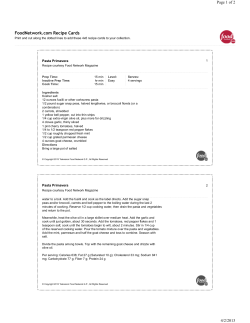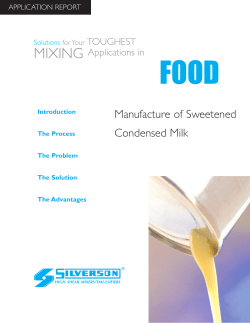
Reactive Hypoglycemia After Gastric Bypass Surgery Reactive Hypoglycemia Treatment
PATIENT EDUCATION Reactive Hypoglycemia After Gastric Bypass Surgery Reactive Hypoglycemia Treatment Reactive hypoglycemia (also known as late dumping syndrome) is low blood glucose. This is a normal side effect after gastric bypass surgery if you eat the wrong foods. If you have low blood glucose, drink 2 ounces of juice or eat one hard candy. Wait 5 to 10 minutes and then repeat if needed. It happens when there is an imbalance between blood glucose and insulin in your bloodstream. Insulin is a hormone that allows glucose to be used. But the insulin stays in the blood after the glucose from the meal has been used. This causes low blood glucose, or hypoglycemia. Then, eat a small portion of a protein source (like meat, cheese or peanut butter or protein bar) and a small portion of a complex carbohydrate (such as whole wheat toast). How to Prevent Reactive Hypoglycemia Symptoms To help prevent reactive hypoglycemia: Reactive hypoglycemia happens 1 to 2 hours after eating a meal, especially one that is high in carbohydrates. Eat three well-balanced meals that include protein, whole grains, fruits and vegetables. Eat the protein first. Symptoms you may feel include: hungry weak or tired sweaty racing heart the need to lie down. Avoid eating pasta, white rice, cereal, white bread and white potatoes. Do not have food and beverages that are high in sugar such as regular pop, sweetened juices, ice cream, candy, cookies and cake. (over) Foods to Eat Foods to Avoid Milk, yogurt, cheese Milk, yogurt, cheese skim or 1 percent milk light yogurt (less than 15 grams of sugar per serving) low-fat cheese Vegetables whole milk, 2 percent milk and chocolate milk ice cream sweetened milk drinks fresh, frozen or canned vegetables with sauces or glazes Fruit Fruit fresh frozen or canned with no added sugar fruit drinks, juice and punch canned or frozen fruit in sugar or syrup Protein Protein lean cuts of meats (93 percent lean or higher) fish and shellfish eggs peanut butter, nuts soy products, tofu legumes (such as lentils, beans and peas) meat prepared with a sweetened sauce or gravy meats high in fat (pastrami, salami, ribs, hotdogs, bacon, sausage, fried chicken or fish, and 85 percent lean meats or lower) Fats and oils Fats and oils Vegetables vegetable oils: olive, canola, peanut, safflower, creamy sauces or gravies made with fat soybean, sunflower and corn oil high fat cream cheese and sour cream low-fat margarine (in tub) or butter-flavored spray Grains, crackers, cereals, pasta, rice Grains, crackers, cereals, pasta, rice Only choose items that are 100 percent whole grain. Do not choose items with white, enriched or bleached grains. bread, tortillas English muffins pasta, brown rice, Kashi® Pilaf melba toast, crackers bread, tortillas, pasta, rice English muffins, muffins sweetened cereals, sweet rolls, pastries saltines, Wheat Thins® waffles, pancakes Other Other decaffeinated coffee or tea artificial sweeteners in beverages, jams, syrup and gelatin herbs and spices regular pop with or without caffeine coffee or tea with caffeine alcoholic beverages sweetened beverages (more than 10 calories per 8 ounces) sugar, brown sugar, powdered sugar, honey, jam, syrup, molasses, candy regular gelatin, pie, cookies, cake, pudding, sweet desserts allinahealth.org ©2014 ALLINA HEALTH SYSTEM. TM – A TRADEMARK OF ALLINA HEALTH SYSTEM OTHER TRADEMARKS USED ARE OWNED BY THEIR RESPECTIVE OWNERS THIS FACT SHEET DOES NOT REPLACE MEDICAL OR PROFESSIONAL ADVICE; IT IS ONLY A GUIDE. gen-anw-15952 (2/14)
© Copyright 2025





















